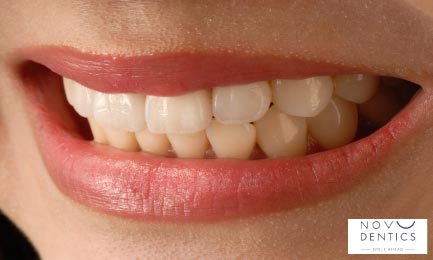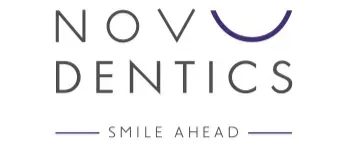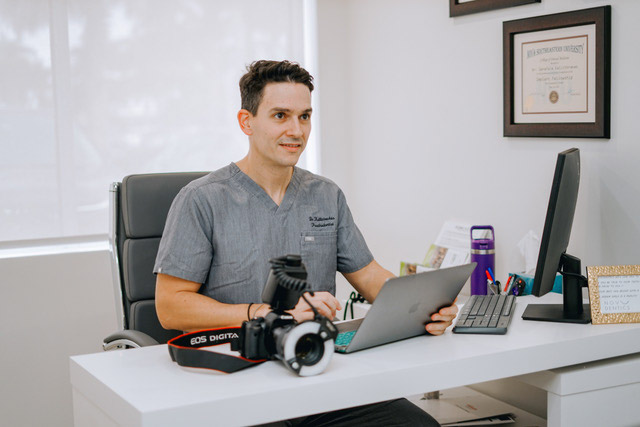When it comes to repairing and restoring damaged or unsightly teeth, fixed prosthodontics offers durable and natural-looking solutions. From a single dental crown to replace a broken tooth to a multi-unit bridge that fills in a gap of missing teeth, fixed prosthetic restorations allow patients to regain full function and aesthetics. This type of restorative dentistry permanently attaches artificial teeth or tooth-shaped coverings to the underlying natural teeth structure with dental cement. In this guide by Novudentics, we’ll explore common examples of fixed prosthodontics, including crowns, bridges, veneers, and inlays/onlays.
We’ll also discuss typical costs and whether insurance helps cover these often pricey procedures. This dental solution can transform your smile and oral health when fillings and other basic dental work are no longer enough. With customized and meticulously crafted restorations, you can confidently flash your brightened, straightened teeth again.
What are Fixed Prosthodontics?
Fixed prosthodontics refers to dental restorations that are permanently cemented or attached to teeth. These restorations cannot be removed by the patient and require a dentist for placement and removal.
Common examples of fixed prosthodontics include dental crowns, bridges, veneers, inlays, and onlays.
Fixed prosthodontic restorations are used to restore teeth that are damaged, worn down, decayed, or fractured. They help protect damaged teeth, restore proper biting and chewing function, and improve the aesthetics of teeth. Fixed prosthodontics can be made from various materials like porcelain, composite resin, and metal alloys.
Examples of Fixed Prosthodontics
- Dental Crowns – Crowns fully cover the entire visible portion of a tooth. They are used to strengthen weakened teeth, repair fractured or severely worn teeth, restore teeth after a root canal, and cover dental implants.
- Dental Bridges – Bridges span the space where one or more teeth are missing. They contain artificial teeth supported on crowns that are cemented onto adjacent natural teeth.
- Dental Inlays and Onlays – Inlays and onlays are used to repair teeth that have mild to moderate decay or structural damage. They differ in the amount of tooth surface they cover.
- Dental Veneers – Veneers are thin shells that cover the front surface of teeth to improve their appearance. They are used to treat chips, gaps, stains, and poorly shaped teeth.
Dental Crowns
Dental crowns are prosthetic covers that surround damaged teeth to restore their structure and appearance. These customized restorations are made from tooth-colored materials like porcelain or ceramic and are permanently cemented onto teeth to mimic natural shape and size. Learn more about dental crowns.
Dental Bridges
Bridges replace missing teeth, restore chewing ability, and prevent remaining teeth from shifting positions. Bridges can be made of porcelain, resin, gold alloys, or a combination of materials.
Inlays
Unlike dental fillings, inlays fit inside the center of the tooth and are usually made from gold, porcelain, or composite resin materials. A dentist will precision mill an inlay to specifically fit the prepared space within the tooth before permanently cementing it in place.
Different Types of Veneers
Dental veneers are thin shells made of porcelain or composite resin that are bonded to the front surface of teeth. Veneers are a type of fixed prosthodontics used to improve the appearance of worn, chipped, crooked, stained, or poorly shaped teeth.

By only requiring minimal removal of tooth structure, veneers provide a more conservative alternative to crowns for cosmetic changes to tooth size, shape, and color.
Common veneer materials include porcelain and composite resin.
How Expensive are Fixed Prosthodontics?
The cost of fixed prosthodontics varies greatly depending on the type of restoration, materials used, and dentist fees. Some typical price ranges include:
- Porcelain crowns – $800 to $3,750 per crown
- Metal crowns – $600 to $2,950 per crown
- 3-unit bridges – $2,000 to $7,550 per bridge
- Ceramic veneers – $925 to $3,900 per veneer
- Composite inlays – $250 to $1,500 per inlay
Remember, these are average price points and your procedure costs may vary from patient to patient. Out-of-pocket expenses can add up quickly for those needing multiple restorations. However, the fixed prosthodontics treatments we offer at Novudentics usually last quite some time, as long as you take care of them properly.
Their longevity makes them a cost-effective option compared to replacements like dentures. Maintaining good oral hygiene and getting regular dental checkups helps extend the lifespan of fixed prosthodontic restorations.
The Role of Cosmetic Dentistry
Cosmetic dentistry focuses on improving the appearance of teeth through procedures like teeth whitening, reshaping, bonding, and veneers. Many cosmetic dental solutions utilize fixed prosthodontic restorations to achieve the desired aesthetic results. For example, dental veneers and crowns are commonly placed for cosmetic reasons to mask flawed teeth and create picture-perfect smiles.
The line between cosmetic and restorative dentistry often blurs with fixed prosthetics. While usually considered a restorative procedure, dental crowns improve aesthetics as well as restore function. Veneers are primarily cosmetic, yet also protect damaged tooth structure. Some other cosmetic uses of fixed prosthodontics include:
- Placing dental bridges to fill gaps from missing teeth
- Using multiple single crowns to correct uneven, worn, or poorly shaped teeth
- Combining crowns and veneers to completely redesign a smile
- Selecting tooth-colored materials like porcelain for a natural appearance
- Reshaping and recontouring with crown extensions or overlays
In many cases, the cosmetic benefits of fixed restorations outweigh the structural repair they provide. People choose to undergo fixed prosthodontic treatments like full-mouth reconstruction to enhance their smiles as much as to improve oral health and function.

